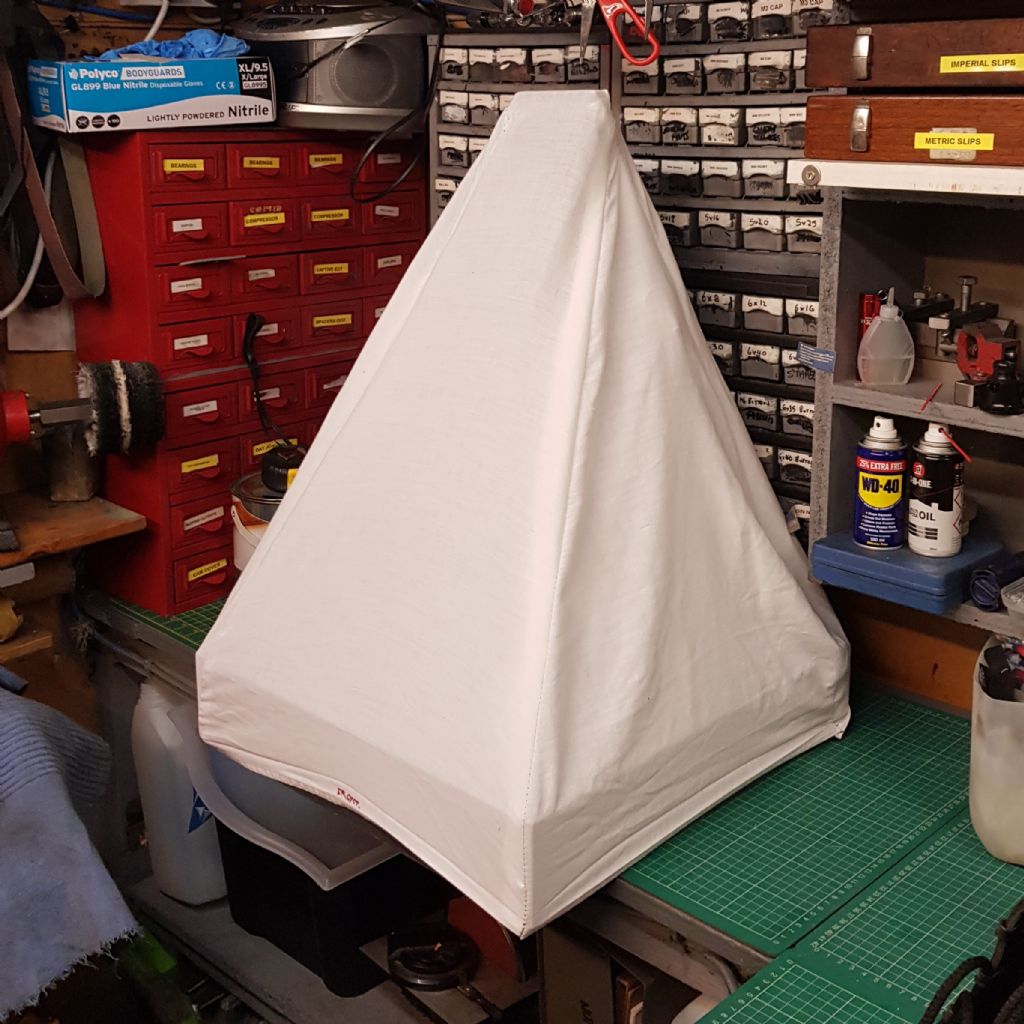Posted by not done it yet on 19/01/2018 09:13:25:
Should they not be supported at three points?
Yes. It is the standard approach for both cast iron and granite plates and in fact when scraping machine components it is standard practice to support the castings on 3 points. Results are much more repeatable and consistent when using 3 points. If you want to go crazy scraping a component have it rest "flat" or on 4 or more points.
Furthermore, you may see on all but the smaller plates the use of 5 points. This is actually still the standard 3 points. The 4th and 5th points do not actually make contact in normal usage. They are used to avoid the risks of a large component (or user) causing the plate to tip on the end with only the single point. So they are just a fraction lower than the 3 weight bearing points. For very large plates intended for large components I am told that further supports may be used and this will be calculated according to the components intended to be placed on the table. Having said that, for the model engineer scales, the only accepted way to support a surface plate is by the 3 (or 5) point method. You will distort the plate if you mount it any other way.
With reference to the fact this is a model engineering forum it is important to note that the effect of not using 3 points on small granite plates and with small components may be of little consequence. My point of view is that a surface plate is a precision tool and if looked after can last a life time. So why not support it correctly It is not hard to do and would in the OP's case require less cork.
I have not worked out how to do multiple quotes on this forum as I would like to address Michael Gilligan's posts. Which I do feel may be unintentionally misleading. I am not knocking Michael as I am most grateful to him in the sense that the forum is a better place with him involved. However the most important specification in a surface plate, aside from flatness , is stability, i.e. resistance to warping. To help produce this characteristic the 3 point approach is prescribed at production stage, in use and in storage. During production for a granite plate any "sag" is lapped out, although it should be noted that the location of the 3 points is calculated to minimise any instability or "sag". Hence why there is no problem mounting a plate on 3 points. In fact the risk is when you do not mount, use and store it on 3 points as it will certainly then "sag". I cannot emphasise enough that it is critical to the stability and hence flatness to store and use the plate on the very same 3 points it was lapped using.
Whilst any quality granite plate will have the location of the 3 (or 5) points marked. For plates that do not it is possible to calculate the location of the points and recommend to use those 3 points to mount the plate as the use will minimise the risk of "sag". As a practical example my 40" x 20" x 6" plate is a part out of a scrapped CMM. It was not clear how it was supported when lapped in as there were cut outs at the calculated 3 point locations for bolting it in to the rest of the machine. So I have had to compromise, however and after 3 years of use I am still very happy with it as it prints repeatedly.
The only reference I can find for this was from a post on the PM forum:
"The old US Federal Specification for granite surface plates — GGG-P-463c, dated September 12, 1973 — calls for the table supports for a rectangular plate to be " . . . located no less than one-fifth or more than one-forth of the length and width in from the ends and sides, respectively, with the exception that the single pad at one end shall be located in the center . . . "
For completeness I would note that in the case of a cast iron plate, the plate is rough machined, then stress relieved (aged) by heat treatment, then finish machined and finally hand scraped again all whilst it is supported on it's calculated 3 points.
Thanks,
Steve
Edited By SteveI on 19/01/2018 18:42:18
Mark Rand.



 mine was also shipped in a box but I discarded it because it smelled of ebola. These granite surface plates wont deform, bend or distort to any degree that will prove problematic, it's just not the characteristics of granite to do so unless they are of a large size and then mishandled. These 450x250x80 plates will be more than stable enough.
mine was also shipped in a box but I discarded it because it smelled of ebola. These granite surface plates wont deform, bend or distort to any degree that will prove problematic, it's just not the characteristics of granite to do so unless they are of a large size and then mishandled. These 450x250x80 plates will be more than stable enough.


